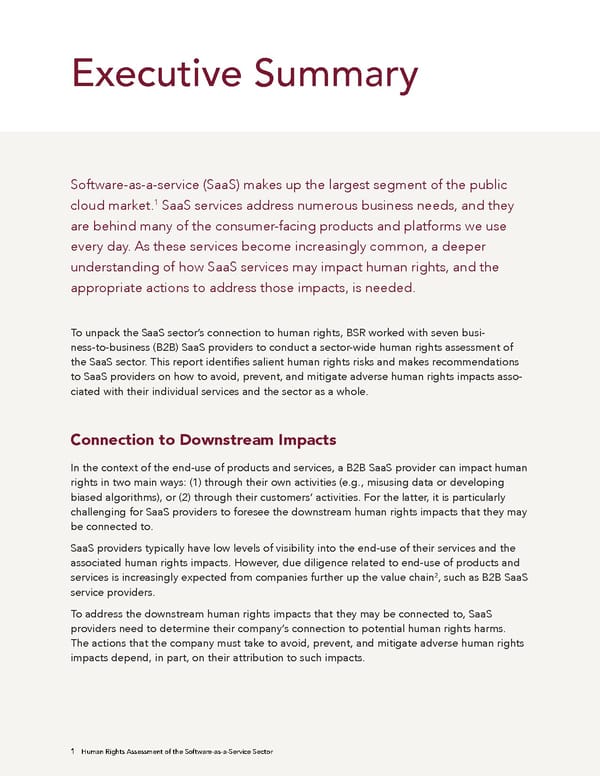Executive Summary Software-as-a-service (SaaS) makes up the largest segment of the public 1 cloud market. SaaS services address numerous business needs, and they are behind many of the consumer-facing products and platforms we use every day. As these services become increasingly common, a deeper understanding of how SaaS services may impact human rights, and the appropriate actions to address those impacts, is needed. To unpack the SaaS sector’s connection to human rights, BSR worked with seven busi- ness-to-business (B2B) SaaS providers to conduct a sector-wide human rights assessment of the SaaS sector. This report identifies salient human rights risks and makes recommendations to SaaS providers on how to avoid, prevent, and mitigate adverse human rights impacts asso- ciated with their individual services and the sector as a whole. Connection to Downstream Impacts In the context of the end-use of products and services, a B2B SaaS provider can impact human rights in two main ways: (1) through their own activities (e.g., misusing data or developing biased algorithms), or (2) through their customers’ activities. For the latter, it is particularly challenging for SaaS providers to foresee the downstream human rights impacts that they may be connected to. SaaS providers typically have low levels of visibility into the end-use of their services and the associated human rights impacts. However, due diligence related to end-use of products and 2, such as B2B SaaS services is increasingly expected from companies further up the value chain service providers. To address the downstream human rights impacts that they may be connected to, SaaS providers need to determine their company’s connection to potential human rights harms. The actions that the company must take to avoid, prevent, and mitigate adverse human rights impacts depend, in part, on their attribution to such impacts. 1 Human Rights Assessment of the Software-as-a-Service Sector
 Human Rights Assessment of the Software-as-a-Service Sector Page 1 Page 3
Human Rights Assessment of the Software-as-a-Service Sector Page 1 Page 3